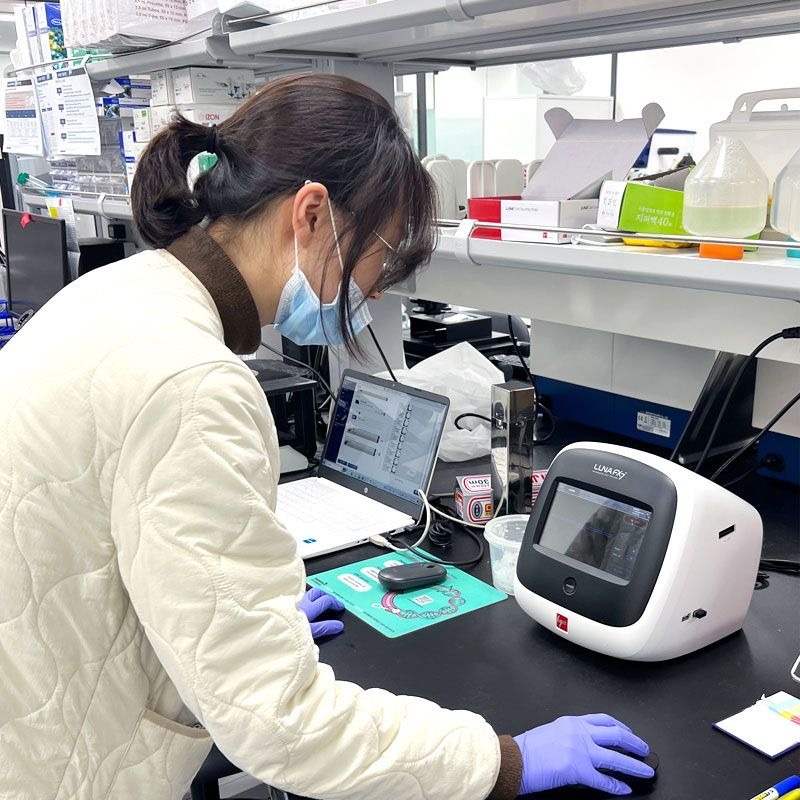Blog
Continuous Inkjet: the Printing Technology you’ve Probably not Heard Before

The term ‘inkjet printing’ is probably familiar to you. In fact, chances are that you probably have a desktop inkjet printer at your home. However, ‘thermal’ inkjet printers (the ones typically found in homes) represent only a portion of inkjet printing technology. In most industrial settings, a continuous inkjet printer is used instead. What exactly is a continuous inkjet printer?
What is continuous inkjet printing?
Continuous inkjet (CIJ) printing was actually the first inkjet printing technology developed – a good two decades before thermal inkjet printers were created. Since the 1950s, the fundamental concept behind its operation has barely changed, which is more of a testament to how reliable and effective the technology is.
CIJ printing starts with a high-pressure pump delivering ink from the printer’s reservoir to the nozzle. The printer nozzle continuously vibrates because of a connected piezoelectric crystal – a crystal that creates vibration when it receives a current supply. The vibration of the nozzle breaks apart the stream of ink into microscopic particles. The spacing of these ink particles can vary according to how quickly the piezoelectric crystal vibrates because of the current that it receives.
From the nozzle, the ink particles go through a charged electrode that creates an electric field. The current supply to this electrode turns on and off, resulting in an alternating series of charged and uncharged ink droplets.
The droplets then pass through another electric field, this time created by a charged plate. The ink droplets are repelled away from the charged plate at an angle determined by the charge status of each droplet. These repelled ink droplets then hit the printing substrate. Uncharged particles simply go straight through the second electric field and enter a recycle stream that brings them back to the printer reservoir.
Where is it used?
Not many people may know about CIJ printing, but just about everyone has seen products of the technology around. Because of its superior printing speed, adhesion, and durability, CIJ printing is the most preferred method for marking product packaging with product codes, expiration dates, and barcodes.
If a product needs to bear markings that should not be rendered illegible under any circumstance – such as warning labels or hazard symbols – then CIJ printing is still the most reliable technology.
CIJ printing is even versatile enough for printing directly on food, such as meat and dairy products. Naturally, food-grade ink needs to be used with CIJ printers for such applications.
The applications of CIJ printing aren’t limited to consumer products. It has also been used to mark medical supplies such syringes, IV bags, and rubber tubes. Even NASA uses CIJ printing for parts that are meant to be used in space, which is quite a statement to the reliability of CIJ printers.
What are its benefits over other inkjet printing technologies?
- Faster
The combination of the Rayleigh mechanism for breaking up the ink droplets and the electric field-propelled ejection of ink into the substrate makes CIJ printing extremely fast – up to a maximum of almost 200 meters per minute, or equivalent to around 120,000 drops of ink per second. For reference, even modern thermal inkjet printers are only capable of about half of that speed. This has made TIJ printing the method of choice for high-volume marking and coding requirements.
- Better adhesion
Since all ink droplets that hit the substrate are electrically charged, the ink used in CIJ printing adheres exceptionally well to a variety of materials. It has a low tendency to smudge even on smooth surfaces such as glass or photo paper. Prints made using the CIJ method don’t fade or become damaged over time, which makes them excellent for products that can go through a lot of handling or be exposed to the outdoor elements.
- Versatile
The superior adhesion of CIJ printing makes it a suitable method for printing on curved or uneven surfaces that can otherwise result in the ink pooling or smudging. Despite being an old technology, there is still a whole spectrum of different inks compatible with CIJ printers that can be used for different materials and applications. CIJ printing performs equally well whether it’s used to print on smooth, porous, absorbent, or biodegradable materials.
Summary
Despite the age of the technology, continuous inkjet printers are still alive and kicking. With so many commercial and industrial applications even until today, it has proven itself to be one of the most enduring printing technologies in human history.
Blog
Applications of Automation in Research and Clinical Diagnostics

Precision counts in the fields of science and medicine. This is particularly true for the basic task of counting and analyzing cells, which is used in both clinical and research settings. The introduction of automatic cell counters, which provide efficiency and accuracy that manual approaches cannot match, has resulted in a notable advancement in this field.
What is Automated Cell Counting?
Automated cell counters are advanced instruments that are made to precisely and swiftly count and examine cells. In contrast to manual counting methods that rely on human vision and a microscope, automated counters use software algorithms and image technology to count and analyze cells. This ensures more accurate findings by expediting the procedure and lowering the possibility of human error.
Type of Automated Cell Counters
There are several types of automated cell counters used in research and clinical diagnostics, each employing different technologies and methods for cell counting. The main types of automated cell counters include:
These various types of automated cell counters provide effective and precise methods for cell counting and analysis, each with unique benefits and uses in clinical and research environments.
Automated cell counters have become indispensable tools in understanding cell behavior. They are used in various research fields, including cancer research, drug discovery, and stem cell therapy.
One of the key benefits in research is the ability to handle large volumes of data. For instance, in drug discovery, automated counters can quickly analyze the effects of thousands of compounds on cell growth and death. This high-throughput capability accelerates the pace of research, allowing scientists to screen potential drugs more efficiently than ever before.
Moreover, automated cell counters offer the precision required to detect subtle changes in cell populations. This is crucial in fields like cancer research, where understanding the behavior of cancer cells can lead to the development of more effective treatments.
The impact of automated cell counters extends beyond the research laboratory and into clinical diagnostics. In medical laboratories, these devices play a critical role in routine blood tests, infectious disease diagnostics, and monitoring patient health during treatment.
For example, in a routine complete blood count (CBC), automated cell counters can quickly provide a detailed analysis of different blood cell types. This information is vital for diagnosing conditions such as anemia, infections, and blood cancers. The speed and accuracy of automated counters mean that patients can receive diagnoses and begin treatment more swiftly.
In the context of infectious diseases, automated counters can detect and quantify specific pathogens or immune cells, helping to diagnose infections quickly and accurately. During the COVID-19 pandemic, automated cell counting technologies were instrumental in monitoring virus spread and patients’ immune responses, showcasing their value in crisis situations.
Challenges and Future Directions
The initial cost of these devices can be high, and their operation requires specific technical expertise. Additionally, different types of cells and conditions may require customized counting protocols, necessitating ongoing adjustments and updates to software algorithms.
Looking ahead, ongoing advancements in technology promise to further enhance the capabilities of automated cell counters. The global cell counting market growth is anticipated at a CAGR of 7.5% by 2032. Innovations in imaging technology, artificial intelligence, and machine learning are expected to improve accuracy, speed, and the ability to analyze more complex cell characteristics. As these technologies evolve, automated cell counters will become even more integral to research and diagnostics, opening new avenues for scientific discovery and patient care.
-

 Tech3 years ago
Tech3 years agoEffuel Reviews (2021) – Effuel ECO OBD2 Saves Fuel, and Reduce Gas Cost? Effuel Customer Reviews
-

 Tech5 years ago
Tech5 years agoBosch Power Tools India Launches ‘Cordless Matlab Bosch’ Campaign to Demonstrate the Power of Cordless
-

 Lifestyle5 years ago
Lifestyle5 years agoCatholic Cases App brings Church’s Moral Teachings to Androids and iPhones
-

 Lifestyle3 years ago
Lifestyle3 years agoEast Side Hype x Billionaire Boys Club. Hottest New Streetwear Releases in Utah.
-

 Tech6 years ago
Tech6 years agoCloud Buyers & Investors to Profit in the Future
-

 Lifestyle4 years ago
Lifestyle4 years agoThe Midas of Cosmetic Dermatology: Dr. Simon Ourian
-

 Health5 years ago
Health5 years agoCBDistillery Review: Is it a scam?
-

 Entertainment5 years ago
Entertainment5 years agoAvengers Endgame now Available on 123Movies for Download & Streaming for Free
